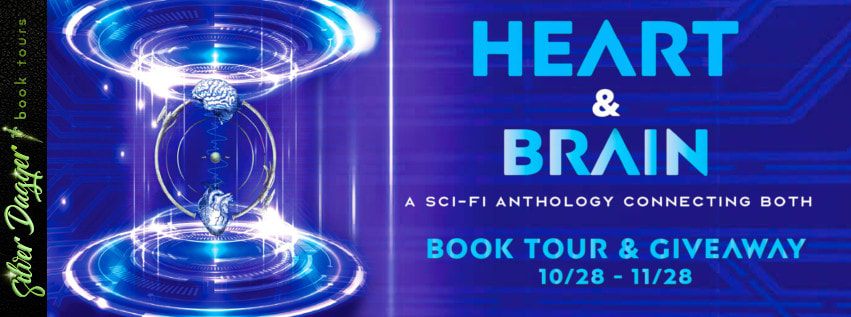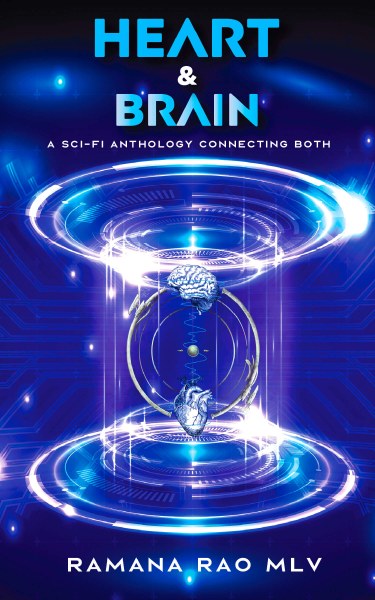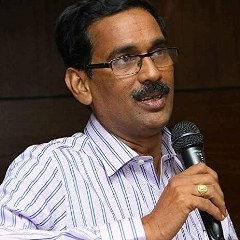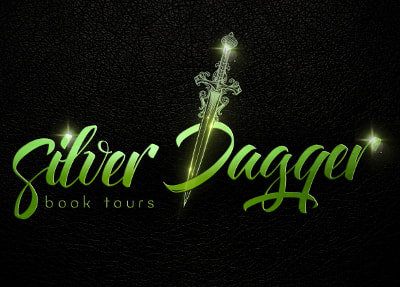Heart & Brain
A SciFi Anthology Connecting Both!
By Ramana Rao MLV
Genre: Science Fiction Fantasy Anthology
The title of the book is “Heart & Brain”, a sci-fi anthology that attempts to connect the both. The work is to depict Indian signature thought in science fiction milieu.
Random Factor: A woman aspiring to become a ‘natural’ mother in a futuristic society encounters a random factor that she hasn’t anticipated.
Sphere: An Artificial Intelligence psychologist aspiring to create a ‘natural’ AI lands himself in a strange situation that endangers his very own ‘sphere’.
Speck: As astronomy professor and scientist, who experienced the most exhilarating event and the most painful event of her life the same day, forty years ago, finds her ‘self’ in the most unexpected quarters.
Replay: An expert in Virtual Reality, who came to India to address a seminar with a hidden agenda, faces a situation that changes her life, forever.
Survival: a cosmic event that made a small physiological change in human race results in a series of events that not only endangers human existence but also lays a path for the destiny of human race – to be discovered and followed.
Ø What inspired you to write this book?
They always say that heart has no logic and science has no emotion. My firm belief that both of them are mutually complementary, rather than mutually exclusive, has made me write this book. I sincerely tried to attribute emotion to logic and logic to emotion! I believe intuition is the invisible fibre that connects both.
Read this excerpt from the short story ‘The Reply’, a story from this anthology. This depicts my inspiration.
"That is how technologies become successful, Ruth. A technology that needs an action going against innate human tendency can never be successful." Observing the confusion in almost all of them, she started to explain, "I will tell you a parallel to help you understand. Suppose your car's right wheel lands in a deep ditch. In which direction do you need to turn the steering wheel? Left? That is anti-clock-wise direction, am I correct?" She watched all of them nodding their agreement.
She knew she was able to kindle their curiosity, and as a psychologist, she knew how to use it. "The technology has been and should be designed that way. The philosophy behind this engineering is simple. Your body tends to tilt towards the left when it is losing its balance in the right-ward direction – your body movement has that innate tendency. And the steering wheel is also designed that way."
For the true teacher that she certainly was, making people understand complexities would give professional satisfaction, which was visible in Suvidha's face. "Suppose the steering wheel was designed in such a way that you need to turn the steering wheel in a clockwise direction when your car’s right wheel goes into a deep ditch, then there is a conflict between your 'natural' tendency and the movement required by the technology. Then obviously, a natural movement wins, and an accident becomes inevitable!"
The takeaway is this; any technology that does not consider human nature cannot survive. This is the primary thought that made me write the book.
Ø What can we expect from you in the future?
I am currently working on a lit fiction with a strange agenda. It has no tales or twists. It contains just ‘raw emotions’ that take their origin in hearts and are churned in brain. I fondly hope that I will be successful in my current endeavour. I am also planning a sci-fi novel with the same basic premise! I sincerely seek all your support for this effort of mine.
Ø Do you have any “side stories’ about the characters?
I believe that ‘side stories’ define or confine the nature of the characters. From that perspective, they are the ‘central’ stories in their own merit. The side stories in my characters decide the central nature of the characters. For example, the father of the protagonist, who crops up in just two or three sentences of the story The Sphere defines what the protagonist is! So is the case with Animisha’s husband in the story The Speck. I don’t want them to be called side stories. They are the canvas on which the character is painted! Can we imagine a painting without a canvas? Unfortunately, the significance of the canvas goes into oblivion when protagonist comes to the fore. Just as the subject of a painting does.
Ø Can you tell us a little about the characters in “Heart & Brain”?
Well, they are as human as you are or as I am. The only difference is that they might have a different ‘canvas’ on which their lives are presented. The conflict between science and emotion is as old as that between human and nature.
For example, Suvidha, the protagonist of the story The Replay, is human because she has the conflict between her desire for revenge and her basic human nature. Usually, one should prevail at the expense of the other. What if both win and both lose at the same time? The battle field for the struggle is, of course, the arena of scientific innovation, making the age-old conflict a science fiction plot.
Pratima, a would-be mother in a futuristic society that does not allow women to give birth, is strong enough to face the random factor and the consequences resulting from her decision. When a human being is eager to embrace the sweet fruits of nature, he/she should be ready to embrace even the ‘sour’ realities of nature as well, right? after all, probability is factor that cannot be removed in any outcome.
I sincerely hope that all the characters are as real as the next-door neighbours of yours, and, at the same time, as chimeric as the dragons of the fantasies. Striking a balance between the two contradicting aspects in character-creation is the challenge I faced during the birth of almost every word! I earnestly hope that I have found a golden-mean.
Ø How did you come up with the concept and characters for the book?
Well, they just jump into my story right from my own house or from my neighbouring one. Coming to concepts, they are ‘slight’ extrapolations of very common-sense things. Let me give you a simple example from the story Survival. We take many things for granted in our life. What if one simple thing is not so? We unconsciously breathe every second of our living life. What if it becomes ‘voluntary’? This is a simple idea and forms the crux of the story.
Ø Where did you come up with the names in the story?
Well, the names of the characters are kind of ‘presaging’ elements. For example, the name ‘Suvidha’, which in Sanskrit means ‘a lady following the right path’, lives up to the sense of the word, of course, in the form of character! The same is the case with Animisha in the story The Speck. Well, I am not going to give the spoiler. Read the book and find it yourself!
Ø What did you enjoy most about writing this book?
I do enjoy the pain and the pleasure of the characters that took their birth in my brain and, in my heart as well. I enjoy the life I impersonated or, you can say, I created to offer them. Only a woman can enjoy the true bliss of giving life. As a writer, I experienced at least a bit of it, during the mental battles I had to fight on their behalf (while I was writing the book), and they have to fight on my behalf (after the characters were born in the world of literature).
Ø Tell us about your main characters – what makes them tick?
I believe any commercial fiction or movie can be successful only when the reader or observer identifies himself/herself with the character. They must be ‘that’ real and at the same time that ‘fantastic’! All the characters in all my stories are ‘main’ characters, because if they are not ‘main’, they don’t deserve to be ‘born’ in my mind. I believe this ‘psychedelic’ nature of the characters is that may, I fondly hope, make them tick.
As I told you earlier, the ‘canvas’ is important. Even the villain undertaking the most gruesome act is just as right and moral as the scrupulous protagonist. It is the background that makes the villain do that nefarious act and it is ‘our’ background that makes us judge the act. I believe I have undertaken this process of catharsis. I have attempted to ‘cut and paste’ a piece of your soul, my soul or anyone’s in the words I used to depict my story. This might make the characters tick with the readers.
Ø How did you come up with the title of the book?
Heart and Brain is a title because the whole thing about them, nothing else. Hence the title. Mind you! Don’t expect a story by that title.
Ø Who designed your book covers?
Please answer my question. Is it good? If this is the answer, I will disclose the names. If that is not the answer, then ‘I’ designed it.
Ø If you had to do it all over again, would you change anything in your book?
Certainly no. After the baby comes out of her body, can the mother do anything to change the baby? She has no moral right to do so. The same is the case with me. Once the words flowed out my mind and found their place on a page, I am as ‘outsider’ to them as you are!
Ø Did you learn anything during the writing of your recent book?
After writing the book, the author ‘rediscovers’ his own self. This certainly happened to me and I am so addicted to the euphoria that I want more and more of it.
Ø If your book was made into a film, who would you like to play the lead?
Let me dream in IMAX level! Susan Sarandon. I still remember her unparalleled performance in Dead Man Walking.
Ø Anything specific you want to tell your readers?
Well, I would like to tell two things. First, your constructive criticism hones my skill and positive feedback pats on my shoulder, encouraging me to move towards perfection, which is an eternally elusive objective. I will be thankful for both, more so in the case of the former.
Second, a good story should achieve what it is designed for – giving a thrill to the reader. Because of this, I have always liked great twists in the ending and have actually attempted to create them. A good story should come to life in the minds of readers ‘after’ they complete it. That has been my aspiration and your reaction after reading my stories will tell me whether I have been successful or not. Thanks for that!
I have been a teacher since 1984 and critical thinking and verbal teacher since 2000. While I was a bad student during my education, I have become a good student during my teaching profession, learning more from my students than from my colleagues.
Though a published author in late 80s, I have become an academic author by writing a GMAT Sentence Correction book for Pearson India. Now, I am trying my hand in sci-fi and literary fiction. Heart & Brain is a book close to my heart because it explores the scientific side of emotion as well as emotional side of science.
I really appreciate your constructive criticism to improve my craft and a positive one, if you feel like giving, a pat on my shoulder to write more.
Facebook * Bookbub * Amazon * Goodreads
Follow the tour HERE for special content and a giveaway!
$20 Amazon









Comments
Post a Comment